Kona Steel Guitar Festival wraps up
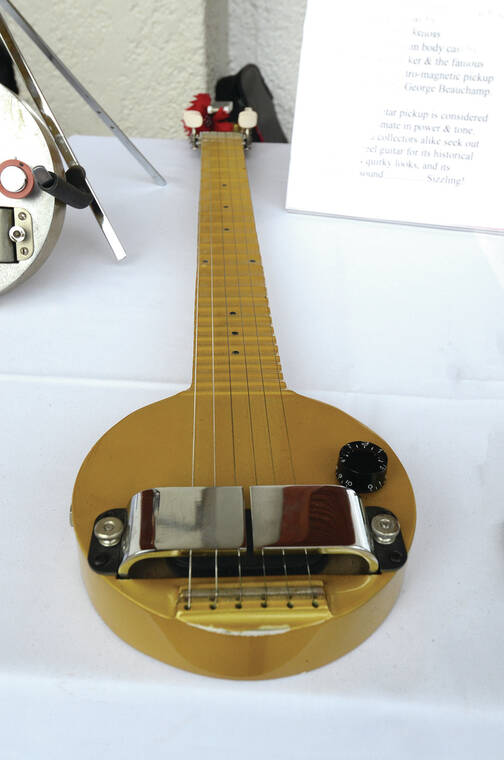
A 1935 Rickenbacher A-22 is on display at the Kona Steel Guitar Festival Saturday at the Outrigger Kona Resort and Spa. (Laura Ruminski/West Hawaii Today)
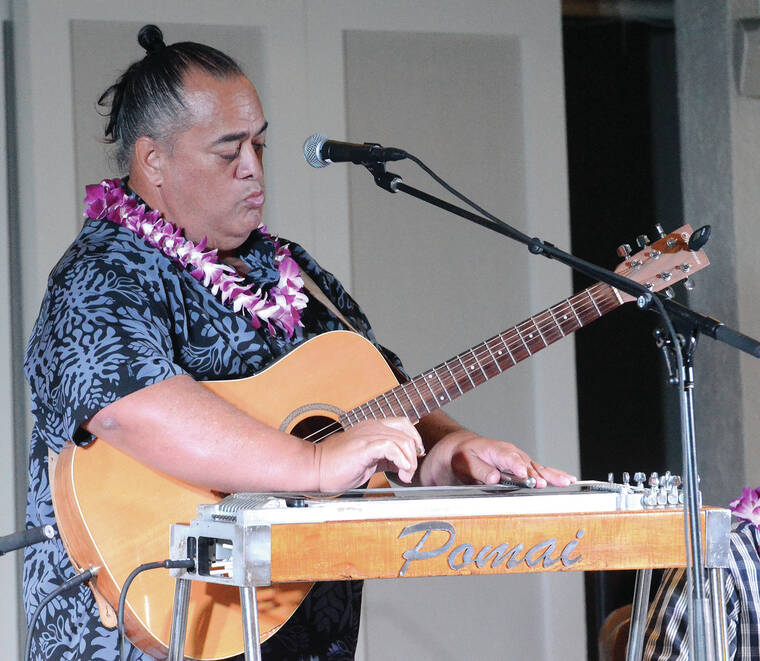
Pomai Brown performs at the Kona Steel Guitar Festival Saturday at the Outrigger Kona Resort and Spa. (Laura Ruminski/West Hawaii Today)
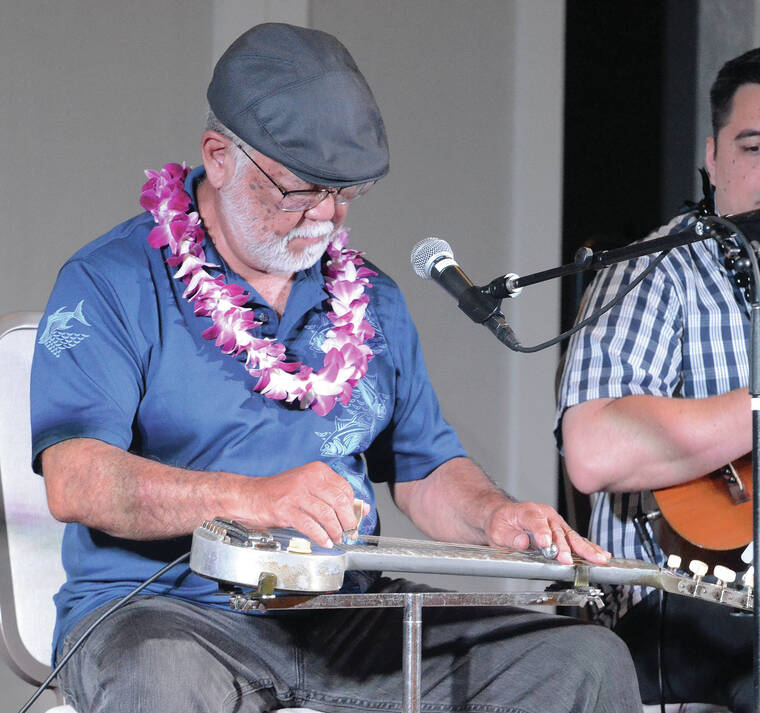
Steel guitar master Dwight Tokumoto performs at the Kona Steel Guitar Festival Saturday at the Outrigger Kona Resort and Spa. (Laura Ruminski/West Hawaii Today)
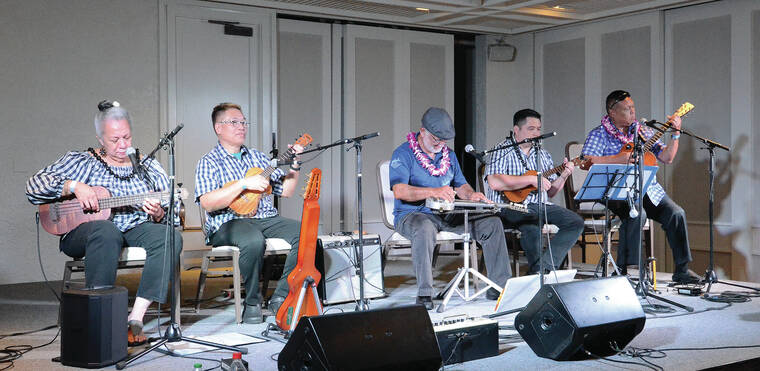
Musicians perform at the Kona Steel Guitar Festival Saturday at the Outrigger Kona Resort and Spa. (Laura Ruminski/West Hawaii Today)
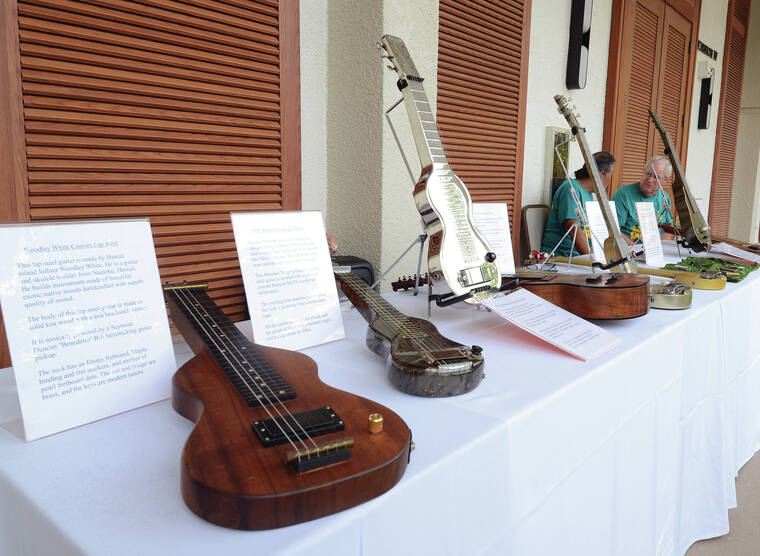
Vintage steel guitars are displayed at the Kona Steel Guitar Festival Saturday at the Outrigger Kona Resort and Spa. (Laura Ruminski/West Hawaii Today)
Musicians and fans of the steel guitar gathered to celebrate Hawaii’s gift to the world at the second annual Kona Steel Guitar Festival held April 4-6 at the Outrigger Kona Resort and Spa.
Musicians and fans of the steel guitar gathered to celebrate Hawaii’s gift to the world at the second annual Kona Steel Guitar Festival held April 4-6 at the Outrigger Kona Resort and Spa.
The three-day festival featured performances by eight steel guitar masters, workshops, kanikapila and a ho‘olaule‘a.
Kuliaikanu‘u Fernandez told the story of the instrument’s inception and evolution, influencing musicians near and far.
“In 1889, a young boy named Joseph Kekuku was a musician. He liked to carry around his acoustic guitar with him. One day, while on his way home from Kamehameha Schools, he was walking along a train track and he saw a rusty bolt on the ground. He picked it up, and as he picked it up, it inadvertently brushed against the strings of his guitar,” Fernandez explained.
Fernandez said Kekuku was intrigued by the sound it made. Next he slid it along the strings and thought he could make something out of it. For the next several years he improved on his craft and realized if he made some adjustments to the guitar by making a higher bridge so the musician didn’t have squeeze the steel down to the fret, rather glide the steel bar along it.
“He tried different implements on the guitar. He got rid of the rusty bolt and tried a steel comb. That worked better. Then he tried a pocket knife and thought he was coming on to something. Finally he came across a polished steel bar, similar to what we use now. That was it. It just slid easily and you could find the right positioning of that bar to find the notes. He knew that was the sound he was looking for,” said Fernandez. Kekuku started teaching other people how to play his new instrument. In 1904 he left Hawaii and traveled across the United States performing in vaudeville acts. He introduced the steel guitar and Hawaiian music to the rest of the world.
“A lot of different people, playing different genres of music picked up on the steel guitar so now you can find the steel guitar being used in bluegrass, country western, even rock and roll,” he said.
He traveled across Europe and eventually settled in New Jersey teaching music until he passed away in 1932.
“He was spreading the word of music and Hawaiian culture throughout the world when most people had no idea who we were or even that we existed,” said Fernandez. Years later, he was inducted into the Hawaiian Music Hall of Fame, and a statue of Kekuku sits at the Polynesian Cultural Center in Laie, Kekuku’s hometown.
Fernandez said the steel guitar community is small but impassioned.
“It’s so unique and the sound is associated with Hawaii,” he said.
Alan Akaka started the festival in Maui in 2012 and has held many over the years in Oahu, Maui, Kauai and the Big Island.
“I do this because of my love of the instrument. I have had a deep passion for this instrument ever since I was a teenager when I started playing,” said Akaka. “My teacher came to the islands because he saw what was going on where the old timers were fading away and there were no young ones to take over this art form. He came to teach any young people he could find so he could keep this going. I thought I would continue his legacy to educate young ones and to promote steel guitar. Now we have more players and more people are aware of it because we promote it.”
The festival concluded Saturday night with an unplugged jam session open to all musicians.
“Promoting an instrument that originated here on the islands, the only modern day stringed instrument invented in Hawaii, that’s important. It is one of the greatest musical gifts to the world,” said Akaka.


